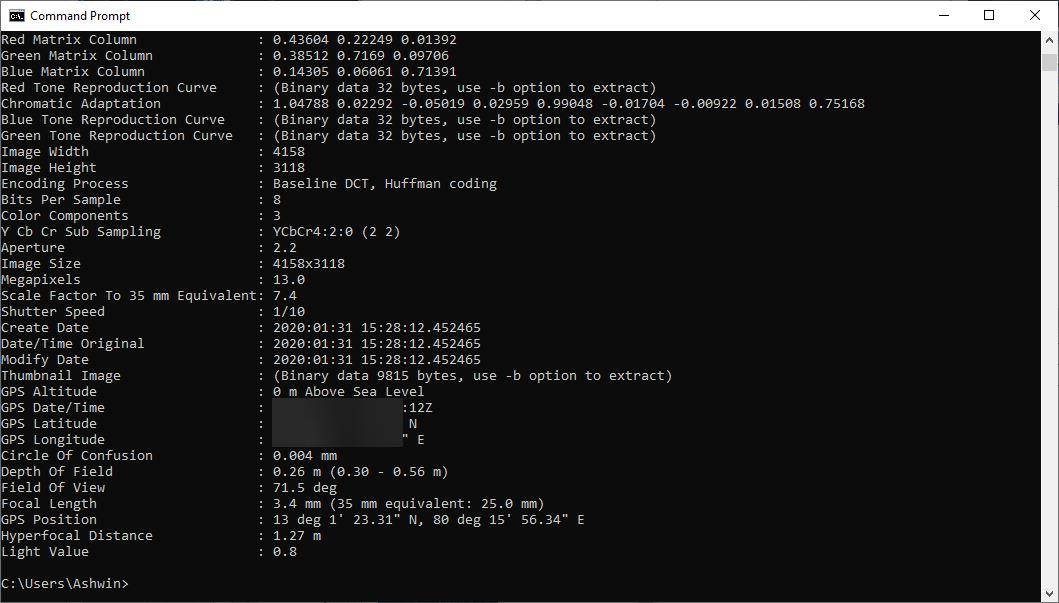
NOTE: using the -T option hides the name of the tag. You can use switches to pull only the information you need like so: ]$ exiftool -T -Filename -Aperture *.jpg

For example, let’s say you have multiple jpegs and you want to know which aperture you used for each image. You can also use the program to get ONLY certain information. Extracting Specific Information from EXIF ]$ exiftool girls.jpgįile Modification Date/Time : 2012:09:01 23:03:01-04:00Įxif Byte Order : Little-endian (Intel, II) Here we are viewing the EXIF data from a file named girls.jpg. Now all you need to do to view the EXIF data is call the exiftool program followed by the image name like so. Type the following command: install Image::ExifTool Refer to " How to Install PERL Modules with CPAN" for more information about installing and using CPAN for Perl Modules.Īfter you installed CPAN (2 minutes) you should be at a CPAN prompt (if not just type cpan at the shell prompt to start): cpan> Perl comes installed by default and all you have to do is install a small Perl program via CPAN. NOTE: For CentOs/Red Hat you will have to install and enable the epel repository. Below you will find how to install it on your favorite flavor of Linux. This is by far the easiest (and safest) way to install exiftool. Most Linux distros have the Perl ExifTool package available in the repositories. Installing Exiftool with Your Package Manager If you already have it installed, you can skip to " Viewing EXIF Data" or " Editing EXIF Data". Let's go over how to install the exiftool on your system. In this tutorial we are going to discuss using exiftool to view and edit EXIF data on the Linux command line.st command line tool I have found. The acronym EXIF stands for Exchangeable Image File Format.

This information can be used to organize photographs, search for specific photos, create a map of where a photo was taken, and much more. The information recorded in EXIF is shutter speed, date and time, aperture, ISO, and even GPS coordinates. From here you can copy a tag and paste it into a method of choice.Īt the time of writing ExifTool supports the following file formats: 3FRģrd Gen.All modern digital cameras (including the one on your phone) record EXIF data when capturing an image.

Tag values can get investigated by selecting a file and clicking the ExifTool button in the Fileinfo box. ExifTool supports both more formats and more tags which can be used to mass rename files through Advanced Renamer. ExifTool is a program by Phil Harvey ( ) distributed with Advanced Renamer to create support for more file formats like raw camera files, documents, zip files etc.


 0 kommentar(er)
0 kommentar(er)
